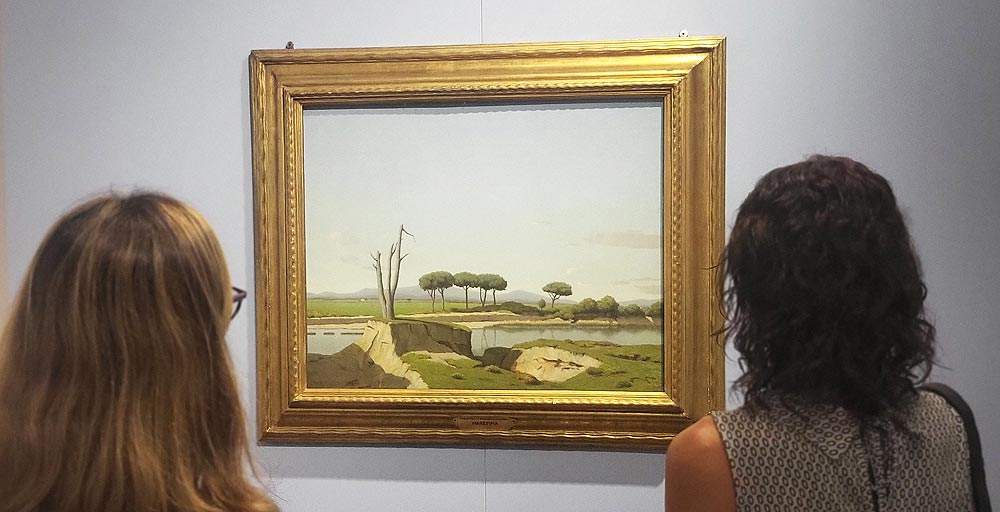An exhibition on the Macchiaioli for the Uffizi Diffusi, coming to Bibbona
Uffizi Diffusi returns to the Tuscan coast. In the ancient village of Bibbona (Livorno), from July 14 to October 15, it is in fact possible to visit the exhibition The Maremma of the Macchiaioli, where art and nature come together in the representation of the Tuscan landscape: indeed, in the paintings on display there is a clear reference to the territory and the surrounding nature, which seems to resonate in the brushstrokes and patches of color and light. The exhibition, focusing on a selection of eight works that Macchiaioli and post-Macchiaioli painters dedicated to the territories of southern Tuscany, takes place in the spaces of the Old Town Hall of Bibbona .
The paintings arrive on loan from the Modern Art Gallery of Palazzo Pitti in Florence. Five are by Giovanni Fattori: Rustic House by the Sea (ca. 1890-95), Tuscan Maremma (ca. 1898), Landscape by the Sea (ca. 1885-1890), Little Maremma (1884), Sunset by the Sea (ca. 1900). Added to these are Scena maremmana (1885-1990) by Eugenio Cecconi, Marina by Giuseppe Abbati, (1862-64), and Paesaggio Maremma (1930) by Memo Vagaggini. The works “photograph” the stillness of the rural Tuscan landscape, among fields and peasant houses, against the backdrop of changing skies overlooking the Tyrrhenian Sea and the shorelines that receive its waves. A crossroads between the sea and the hills, Bibbona thus celebrates the Maremma in nineteenth-century Tuscan art, with a splendid Uffizi diffuse exhibition, part of the Galleries’ major program of art dissemination in the area.
The ’Macchiaioli’ brushstrokes, fast, dense and instantaneous, encapsulate the geography of the landscape with immediacy and veracity, establishing a harmonious nexus among the paintings on display. At the same time, one gets the impression that the exhibition contains almost dissonant glimpses, as if from different worlds: each painter, in fact, infuses the work with his recognizable imprint, conveying to the viewer his version (and vision) of Maremma. The Leghorn-born Giovanni Fattori, to whom five of the works that make up the exhibition belong, interprets nature with a languid, enveloping gaze: his work Piccola Maremma embraces the Tuscan fields in an intense horizontal view, rendered with fluid, full-bodied touches. Eugenio Cecconi, on the other hand, recounts a more arid, almost aching countryside; Giuseppe Abbati ’s work is immersed in a serene atmosphere of peace, while Memo Vagaggini’s angularity, suspended between land and water, restores a sense of refined harshness.
“Surprisingly, the Maremma immortalized a century ago by the Macchiaioli,” says Uffizi director Eike Schmidt, “is the same landscape in which every inhabitant, every tourist finds himself immersed even today. In a country plagued and ruined by overtourism, it makes us happy to see that there are still islands that are almost intact, having as evidence paintings from a century and a half ago. Paintings that invite us to look with love and deep respect - the same gaze of those early artists of en plein air painting - at the many treasures of nature still offered by this wonderful remnant of Tuscany.”
The ever richer, ever more multifaceted journey of the Uffizi diffuse continues," said the president of the Region of Tuscany, Eugenio Giani. "With this exhibition, The Maremma of the Macchiaioli, the Uffizi diffusi project recounts one of our territories that has become a myth, one that has made its way into the souls and hearts of so many artists who have represented it. The Macchiaioli, founding elements in the history of Tuscany’s cultural and artistic identity, gave the Maremma, its bitter sweetness, its bond between man and landscape, that uniqueness and iconic power based on the values of nature, which made it a treasure that deserves to be admired. And thanks to the Uffizi spread, the mission is accomplished."
“A dream that began in the village of Bibbona just over a year ago is finally being realized,” says Bibbona Mayor Massimo Fedeli. “For our municipality it is an honor to host the Uffizi Diffusi project and it is even more so to do so with an exhibition that tells the story of our territory and that agricultural tradition that characterizes us and in which Bibbona has its roots. We are a municipality of a little more than three thousand inhabitants but with well over a million visitors in the summer season. An initiative of such a high cultural level, revolutionary in its idea of bringing art to small villages, gives us an opportunity for visibility and a tourist offer of the highest quality that is valid for the entire Etruscan Coast. It is exciting to have succeeded in this endeavor and my thanks go to the Uffizi Gallery and its director Schmidt in primis, but also to all those who made it possible to arrive at the opening of this exhibition.”
 |
| An exhibition on the Macchiaioli for the Uffizi Diffusi, coming to Bibbona |
Warning: the translation into English of the original Italian article was created using automatic tools. We undertake to review all articles, but we do not guarantee the total absence of inaccuracies in the translation due to the program. You can find the original by clicking on the ITA button. If you find any mistake,please contact us.





























